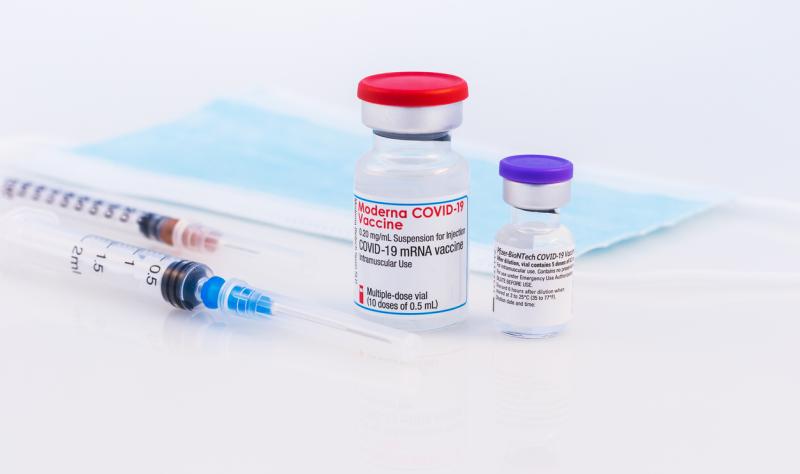FDA Panel Meeting for Discussion If Next Generation Vaccines Should Target Omicron

© Caroline Brehman/EPA, via Shutterstock A healthcare worker prepares a Pfizer-BioNTech coronavirus booster shot in Los Angeles earlier this year.
An independent panel of advisers to the Food and Drug Administration is meeting on Tuesday as the members consider options for updating the coronavirus vaccines for a booster campaign aimed at warding off fall or winter surges.
The experts will vote at the end of the daylong meeting on whether the vaccines should be reformulated to target Omicron or its subvariants, even though the virus might evolve yet again by the fall. You can watch the meeting live on YouTube here.
Dr. Peter Marks, who oversees the F.D.A.’s vaccines office, said at the beginning of Tuesday’s meeting that a good match between a vaccine and variant could lead to greater vaccine effectiveness and durability. He said the Omicron subvariants known as BA.4 and BA.5 were “poised to become the dominant variant,” a hint of where regulators may look in choosing a new composition for coronavirus shots. Not long after his remarks, the Centers for Disease Control and Prevention released new estimates showing the two subvariants now make up more than half of new cases in the country.
Sign up for The Morning newsletter from The New York Times
Dr. Marks displayed a timeline suggesting that regulators would decide on a new vaccine’s makeup by early July, and that a fall booster campaign with a newly designed shot could begin in October. Manufacturers of so-called mRNA vaccines, made by Moderna and Pfizer-BioNTech, require roughly three months to begin producing doses with a new composition.
The advisory group will also be asked whether vaccines that combine the original formulation with one targeting Omicron would be preferable to vaccines that only target Omicron. Data supporting the option that combines the so-called “prototype,” or existing, vaccines with Omicron has received mixed reviews so far, with regulators suggesting in briefing materials that such a design is “already somewhat outdated.”
Regulators are also planning to ask the advisers whether health providers should continue using the original vaccine formulation this fall on people who have not yet been fully vaccinated if the makeup of the booster changes.
Members of the F.D.A. committee may be divided on who should receive new vaccines. Some might say that a fall booster will be broadly necessary, while others might argue that because the current vaccines’ protection against severe forms of Covid-19 has held, the next round of shots should be limited to high-risk individuals, at least to start.
Heather Scobie, a C.D.C. epidemiologist, presented data at Tuesday’s meeting showing that Americans 70 and older had been hospitalized in recent months at substantially higher rates than other age groups. Despite poor uptake, she showed data indicating that second boosters were reducing the risk of death in older adults. While figuring out the next step in the vaccination campaign, she said, public health officials should “be pushing the second boosters in older ages to protect against serious illness.”
The possibility of a more advanced vaccine has been teased for months by federal health officials, who have warned that as the virus evolves rapidly, vaccine-induced protection against infection has faded, allowing some Americans to be reinfected even in the span of several months.
In the briefing material, F.D.A. officials said the risk of another major outbreak will rise later this year “due to the combination of waning immunity, further evolution of variants, and increased indoor activity.” Justin T. Lessler, an epidemiologist with the University of North Carolina at Chapel Hill, presented a series of projections on the pandemic’s trajectory in coming months in the United States.
Under the most optimistic scenario, his team anticipated 95,000 deaths between in the 12-month period ending March 2023. Under the most pessimistic, the nation would suffer more than 200,000 deaths. He said his team’s more pessimistic scenarios, which tried to factor in waning immunity and the emergence of new variants, have been more accurate so far.
Still, he cautioned that the unpredictable nature of the pandemic made it difficult to make assumptions about new variants and the havoc they could cause.
“That’s the problem, because we’re being asked, more or less, to have a crystal ball today,” said Dr. Arnold S. Monto, a University of Michigan epidemiologist and the F.D.A. committee’s chair.
Moderna and Pfizer, the makers of the two most widely-used vaccines in the United States, have both studied Omicron-specific vaccines, expecting them to be seriously considered as the fall booster option. But the research has been complicated by the subvariants, for which neither company has developed shots yet.
Pfizer showed the panel preliminary data from a mouse trial suggesting that a vaccine combining the prototype with BA.4 and BA.5 worked better against all Omicron’s subvariants than the existing vaccine does. A company official said researchers do not yet have a side-by-side comparison with a version targeting Omicron itself.
Pfizer may be able to meet an October deadline with a vaccine that aims at the latest subvariants, according to people familiar with the company’s operations. But Moderna has said it likely would not have such an option ready until late this year or early next year.



